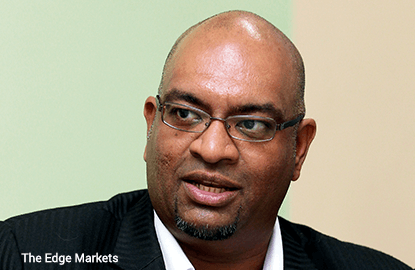
This article first appeared in Personal Wealth, The Edge Malaysia Weekly, on Feb 22 - 28, 2016.
Investments in forests have long provided lush returns for investors in developed markets. Now, those in Southeast Asia will have the chance to dip into this evergreen asset class.

Forests are becoming a shelter for the wealthy looking for cover from the volatility of the stock markets. In developed nations, however, university endowments, pension funds and institutional investors have been investing in forests — and all the green that come with them — for more than 30 years.
These investors, such as the Harvard University endowment, which started buying US forest land in 1997, view forests as an asset class separate from stocks, bonds and other forms of real estate, mainly for its inflation-hedging characteristics. Research data estimates that institutional investments in forests currently stand at US$100 billion.
In Malaysia, such investments are starting to garner interest. It has been reported that the University of Malaya has plans to boost its income by investing in alternative assets such as forests and plantations after the federal government slashed funding for public universities by more than 20% under Budget 2016.
The Employees Provident Fund (EPF), meanwhile, has expressed interest in exploring new asset classes for its private markets portfolio, in particular, natural resources. In a news statement in 2014, the EPF announced that it would focus on upstream energy, timber land and agriculture in developed countries such as Australia and New Zealand.
Malaysia-based investment management company Capital Hive Sdn Bhd is one of the latest to get into this area, with plans to launch an open-ended sustainable timber investment initiative named the WoodCraft Fund.
The fund, which will be domiciled in the Cayman Islands, will be offered to institutional and sophisticated investors in Singapore, Hong Kong and Dubai. The minimum investment will be US$500,000 while subsequent additional investments will start at US$100,000. The company plans to list the green fund in the Cayman Islands by the first half of the year.
“Timber is not affected by economic cycles since trees grow irrespective of what is happening globally. Timber growth is also positively correlated to inflation, giving some hedge against inflation,” says Capital Hive managing director Suraj Andrew.
“Over the last few years, there have been very strict timber standards set by the European Union, the US and Australia. This has forced countries such as Japan and South Korea to follow suit. These markets don’t quite like first-growth timber or timber from virgin jungles; they are looking for sustainably grown timber. Typically, most of the timber produced in this region has been from first cuts,” he explains.
Capital Hive is currently completing its due diligence to lease parcels of land in Cambodia, Indonesia and Myanmar to grow sustainable timber for biomass purposes. While timber is a valuable commodity in Malaysia, there are not many involved in the sustainably grown market yet, says Suraj, who was previously business development head at Carey Real Estate Sdn Bhd, a real estate investment firm.
“Some of the big timber companies are now retooling and repurposing. But not many have looked at investing in this market. It is becoming a new investment destination,” he adds.
Investments in forests, which are considered real assets (defined as physical or tangible assets that can provide “real returns”), are well established in the West. According to Sydney-based New Forests, a sustainable real assets investment manager, investments in these assets have grown at double the rate of traditional financial investments since 2005. Assets under management reached US$7.2 trillion in 2013.
In its Timberland Investment Outlook 2015-2019, New Forests says the alternatives market is expected to grow at an average of 5% per annum over the next four years, and sophisticated investors may want to look at investments in illiquid alternatives, in which they can seek illiquidity premiums. It adds that two-thirds of institutional investors, which manage at least US$2 billion, plan to increase allocations to real assets and that individual portfolio allocations to real assets will grow to 20% over the next two decades.
New Forests estimates that the investments needed in new plantations over the next 20 to 30 years could range between US$100 billion and US$500 billion to meet forecast levels of timber demand.
Setting up a green timber fund
While funds that invest in timber have existed for decades, most of them have been on a small scale. “This trend is just beginning in Asia. We know of some Australian funds that have grown extremely fast in the last 10 years. Many are also moving to Singapore and Hong Kong to start expanding in this region. But no significant timber fund has originated from the Southeast Asian markets such as Malaysia, Indonesia and Cambodia,” says Suraj.
Returns from timber have remained impressive. According to Morningstar Inc, when the MSCI World index plunged some 18% (in pound sterling terms) in 2008, NCREIF Timberland — one of the more prominent timber indices — grew nearly 52%. But like other investments, it lagged behind the MSCI World index by about 30% in 2009, notes the investment research and management firm, pointing out that this asset class is just as uncertain as equities.
“So, we were looking for alternatives that would require less labour, and that’s when we discovered there were many types of timber worth investing in, such as high-value timber and fast-growing timber,” says Suraj.
Save by subscribing to us for your print and/or digital copy.
P/S: The Edge is also available on Apple's AppStore and Androids' Google Play.